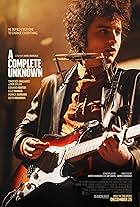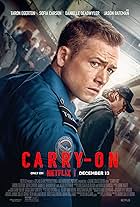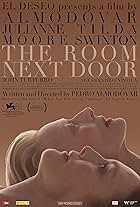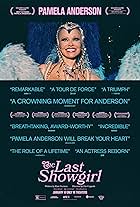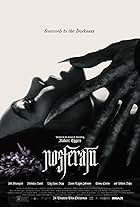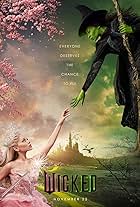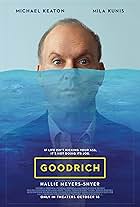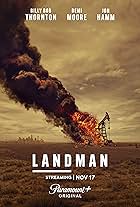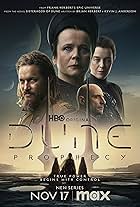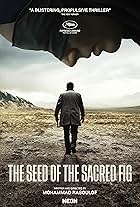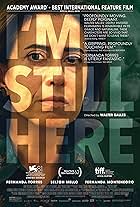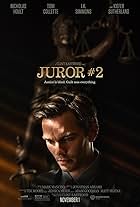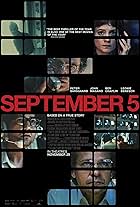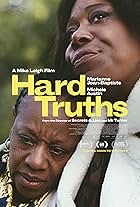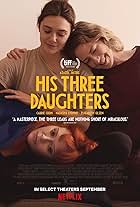
TheCinemaGroup
Joined Oct 2024
Welcome to the new profile
We're still working on updating some profile features. To see the badges, ratings breakdowns, and polls for this profile, please go to the previous version.
Ratings19
TheCinemaGroup's rating
Reviews17
TheCinemaGroup's rating
Timothée Chalamet delivers a performance for the ages in A Complete Unknown, James Mangold's riveting and evocative biopic about Bob Dylan's formative years. Chalamet doesn't just play Dylan-he is Dylan, capturing the enigmatic artist's spirit with uncanny precision. From his quiet intensity to his electrifying musical performances, Chalamet's portrayal is both haunting and magnetic, elevating the film into a work of art that transcends the biopic genre.
The film unfolds as a lyrical journey, taking us from Dylan's humble beginnings in Minnesota to his emergence as a cultural icon in 1960s Greenwich Village. Mangold's direction is rich with atmosphere, immersing the audience in the smoky, cramped coffeehouses and bustling streets of the Village. The cinematography, paired with a raw and evocative score, creates a world as textured and complex as Dylan himself. Each scene, whether it's Dylan singing "Masters of War" at a small café or crafting "Like a Rolling Stone" in a moment of quiet inspiration, pulses with authenticity.
What sets A Complete Unknown apart is its ability to capture not just Dylan's external journey but the internal battles that defined his art. The script, co-written by Mangold and Jay Cocks, explores Dylan's relationships with Joan Baez (a luminous Monica Barbaro) and Sylvie (Elle Fanning, tender and poignant), as well as his camaraderie with Pete Seeger (an exceptional Edward Norton). These connections, fraught with tension and affection, reveal Dylan's dualities: his longing for connection and his relentless drive for artistic independence.
Chalamet's Dylan is an artist caught between tradition and innovation, folk purity and electric rebellion. His transformation-from earnest folk singer to the revolutionary voice of a generation-is captured with such emotional depth that it feels both monumental and deeply personal. The decision to let full-length musical performances play out is a masterstroke, allowing the audience to feel the power of Dylan's music as if hearing it for the first time.
The supporting cast shines in their own right, particularly Barbaro, whose portrayal of Baez brims with strength and vulnerability, and Norton, whose Seeger is an idealistic counterpoint to Dylan's restless energy. Together, they create a tapestry of relationships that underscores the personal stakes of Dylan's artistic evolution. Elle Fanning's understated performance as Sylvie adds a quiet poignancy, representing a fleeting stability in Dylan's chaotic world.
James Mangold's direction doesn't shy away from showing Dylan's flaws, painting a portrait of an artist whose genius was as much a burden as it was a gift. The narrative seamlessly blends personal moments with the broader cultural upheaval of the 1960s, illustrating how Dylan's music became both a reflection and a catalyst of change. The film's pacing allows the audience to sit with these moments, fully absorbing the magnitude of Dylan's impact.
What truly elevates A Complete Unknown is its focus on the music. Each song feels like a character in its own right, carrying the story forward and deepening our understanding of Dylan. From the haunting rendition of "Song to Woody" to the rebellious energy of "Subterranean Homesick Blues," the music becomes a window into Dylan's soul. Chalamet's live performances are raw and visceral, capturing the essence of Dylan's artistry.
Ultimately, A Complete Unknown is a testament to the enduring power of music and the indelible mark Dylan left on the world. It's a film that doesn't just tell a story; it invites the audience to experience a movement, to feel the seismic shifts in culture and music that Dylan ignited. Chalamet's performance anchors this journey, making it as unforgettable as Dylan's music itself. This is not just a film-it's an experience, a poignant reminder of the transformative power of art.
Reviewed at AMC Lincoln Square, New York, Nov. 25, 2024. MPA rating: R. Running time: 141 MIN.
The film unfolds as a lyrical journey, taking us from Dylan's humble beginnings in Minnesota to his emergence as a cultural icon in 1960s Greenwich Village. Mangold's direction is rich with atmosphere, immersing the audience in the smoky, cramped coffeehouses and bustling streets of the Village. The cinematography, paired with a raw and evocative score, creates a world as textured and complex as Dylan himself. Each scene, whether it's Dylan singing "Masters of War" at a small café or crafting "Like a Rolling Stone" in a moment of quiet inspiration, pulses with authenticity.
What sets A Complete Unknown apart is its ability to capture not just Dylan's external journey but the internal battles that defined his art. The script, co-written by Mangold and Jay Cocks, explores Dylan's relationships with Joan Baez (a luminous Monica Barbaro) and Sylvie (Elle Fanning, tender and poignant), as well as his camaraderie with Pete Seeger (an exceptional Edward Norton). These connections, fraught with tension and affection, reveal Dylan's dualities: his longing for connection and his relentless drive for artistic independence.
Chalamet's Dylan is an artist caught between tradition and innovation, folk purity and electric rebellion. His transformation-from earnest folk singer to the revolutionary voice of a generation-is captured with such emotional depth that it feels both monumental and deeply personal. The decision to let full-length musical performances play out is a masterstroke, allowing the audience to feel the power of Dylan's music as if hearing it for the first time.
The supporting cast shines in their own right, particularly Barbaro, whose portrayal of Baez brims with strength and vulnerability, and Norton, whose Seeger is an idealistic counterpoint to Dylan's restless energy. Together, they create a tapestry of relationships that underscores the personal stakes of Dylan's artistic evolution. Elle Fanning's understated performance as Sylvie adds a quiet poignancy, representing a fleeting stability in Dylan's chaotic world.
James Mangold's direction doesn't shy away from showing Dylan's flaws, painting a portrait of an artist whose genius was as much a burden as it was a gift. The narrative seamlessly blends personal moments with the broader cultural upheaval of the 1960s, illustrating how Dylan's music became both a reflection and a catalyst of change. The film's pacing allows the audience to sit with these moments, fully absorbing the magnitude of Dylan's impact.
What truly elevates A Complete Unknown is its focus on the music. Each song feels like a character in its own right, carrying the story forward and deepening our understanding of Dylan. From the haunting rendition of "Song to Woody" to the rebellious energy of "Subterranean Homesick Blues," the music becomes a window into Dylan's soul. Chalamet's live performances are raw and visceral, capturing the essence of Dylan's artistry.
Ultimately, A Complete Unknown is a testament to the enduring power of music and the indelible mark Dylan left on the world. It's a film that doesn't just tell a story; it invites the audience to experience a movement, to feel the seismic shifts in culture and music that Dylan ignited. Chalamet's performance anchors this journey, making it as unforgettable as Dylan's music itself. This is not just a film-it's an experience, a poignant reminder of the transformative power of art.
Reviewed at AMC Lincoln Square, New York, Nov. 25, 2024. MPA rating: R. Running time: 141 MIN.
RaMell Ross transforms Colson Whitehead's Pulitzer-winning novel into an immersive cinematic experience that confronts systemic racism with unflinching honesty and artistic brilliance.
RaMell Ross's Nickel Boys is not a film that watches passively. It demands engagement, understanding, and empathy from its audience, much like the Pulitzer Prize-winning novel by Colson Whitehead on which it is based. Through its daring visuals and emotionally charged storytelling, Nickel Boys immerses viewers in the horrors of the fictional Nickel Academy, a reform school in 1960s Florida modeled after the real-life Dozier School for Boys.
The film follows Elwood (Ethan Herisse) and Turner (Brandon Wilson), two young Black men navigating the systemic abuse, violence, and dehumanization at Nickel Academy. Ross opts for an intimate, first-person cinematic technique with the help of director of photography Jomo Fray, ensuring the audience doesn't just watch the story but experiences it through the eyes of its protagonists. From the stolen car that seals Elwood's fate to the mirrored ceiling reflecting fleeting moments of connection, the cinematography is both haunting and poetic.
Ross doesn't shy away from discomfort. Instead, he leans into it, capturing moments of injustice with brutal authenticity. One of the film's most harrowing sequences involves a Nickel supervisor (Hamish Linklater) doling out punishment. The violence occurs off-screen, but the chilling sound of the strap and the visceral reactions of the boys leave an indelible mark. The film also uses historical references, like cutting in scenes from 1958's The Defiant Ones, to deepen the emotional resonance of Elwood and Turner's attempted prison break.
The performances are as captivating as the story. Herisse brings a quiet determination to Elwood, while Wilson's Turner is a revelation, showcasing a raw vulnerability that makes his arc unforgettable. Aunjanue Ellis-Taylor delivers a heartbreaking turn as Elwood's grandmother, Hattie, and Fred Hechinger exudes sinister menace as a trustee of the academy. In flash-forwards, Daveed Diggs portrays one of the survivors grappling with the haunting legacy of Nickel, a reminder that systemic racism's scars endure far beyond the immediate trauma.
POPULAR ON THE CINEMA GROUP
Ross masterfully balances artistry and substance, using his background as a photographer and documentarian (Hale County This Morning, This Evening) to craft a narrative that feels both tactile and transcendent. The visuals are stunning-orange trees swaying in the breeze, civil rights protests flickering on storefront TVs-but they never overshadow the film's thematic weight. The film dares to ask: How do you bear witness to atrocities while maintaining hope for a better future?
Ross's unique approach to storytelling is complemented by an equally daring narrative structure. The film's immersive technique places the audience directly into the emotional and physical landscapes of its characters. By shifting perspectives between Elwood and Turner, the audience is given a multi-faceted view of life at Nickel Academy-its suffocating oppression and fleeting moments of resilience. These shifting perspectives create a layered narrative that resonates on both personal and societal levels.
Some may find Ross's immersive, collage-like approach challenging, but it's precisely this audacity that makes Nickel Boys a must-watch. It's not just a film about the past but a searing indictment of a present still shaped by institutional racism in new and disturbing forms. The juxtaposition of Elwood's unyielding hope with Turner's hardened pragmatism paints a poignant picture of the different ways individuals navigate systemic oppression. This duality adds emotional depth to the story, making it both heart-wrenching and thought-provoking.
Ross also introduces moments of unexpected beauty amidst the darkness. The tactile warmth of a breeze on an orange tree, the quiet solidarity of shared meals, and the fleeting joy of stolen moments all serve as reminders of the humanity that persists even in the face of unimaginable cruelty. These moments are not mere embellishments but integral parts of the narrative, highlighting the resilience of the human spirit.
The film's climax, centered around Elwood and Turner's daring escape, is a masterclass in tension and emotional weight. The use of intercut scenes from The Defiant Ones adds a layer of meta-commentary on the history of cinematic depictions of race and resistance. The pursuit by a white trustee, portrayed with chilling menace by Fred Hechinger, serves as a stark reminder of the pervasive and relentless nature of systemic racism.
Nickel Boys is more than a movie-it's a cry for justice, a call to action, and a work of art that demands to be felt as much as seen. RaMell Ross's fearless storytelling, coupled with extraordinary performances, ensures this adaptation is both unforgettable and necessary. It challenges us to confront our shared history while offering glimmers of hope that change, however incremental, is possible.
Reviewed At Opening Night of the 62nd New York Film Festival at Alice Tully Hall on September 27, 2024.
RaMell Ross's Nickel Boys is not a film that watches passively. It demands engagement, understanding, and empathy from its audience, much like the Pulitzer Prize-winning novel by Colson Whitehead on which it is based. Through its daring visuals and emotionally charged storytelling, Nickel Boys immerses viewers in the horrors of the fictional Nickel Academy, a reform school in 1960s Florida modeled after the real-life Dozier School for Boys.
The film follows Elwood (Ethan Herisse) and Turner (Brandon Wilson), two young Black men navigating the systemic abuse, violence, and dehumanization at Nickel Academy. Ross opts for an intimate, first-person cinematic technique with the help of director of photography Jomo Fray, ensuring the audience doesn't just watch the story but experiences it through the eyes of its protagonists. From the stolen car that seals Elwood's fate to the mirrored ceiling reflecting fleeting moments of connection, the cinematography is both haunting and poetic.
Ross doesn't shy away from discomfort. Instead, he leans into it, capturing moments of injustice with brutal authenticity. One of the film's most harrowing sequences involves a Nickel supervisor (Hamish Linklater) doling out punishment. The violence occurs off-screen, but the chilling sound of the strap and the visceral reactions of the boys leave an indelible mark. The film also uses historical references, like cutting in scenes from 1958's The Defiant Ones, to deepen the emotional resonance of Elwood and Turner's attempted prison break.
The performances are as captivating as the story. Herisse brings a quiet determination to Elwood, while Wilson's Turner is a revelation, showcasing a raw vulnerability that makes his arc unforgettable. Aunjanue Ellis-Taylor delivers a heartbreaking turn as Elwood's grandmother, Hattie, and Fred Hechinger exudes sinister menace as a trustee of the academy. In flash-forwards, Daveed Diggs portrays one of the survivors grappling with the haunting legacy of Nickel, a reminder that systemic racism's scars endure far beyond the immediate trauma.
POPULAR ON THE CINEMA GROUP
Ross masterfully balances artistry and substance, using his background as a photographer and documentarian (Hale County This Morning, This Evening) to craft a narrative that feels both tactile and transcendent. The visuals are stunning-orange trees swaying in the breeze, civil rights protests flickering on storefront TVs-but they never overshadow the film's thematic weight. The film dares to ask: How do you bear witness to atrocities while maintaining hope for a better future?
Ross's unique approach to storytelling is complemented by an equally daring narrative structure. The film's immersive technique places the audience directly into the emotional and physical landscapes of its characters. By shifting perspectives between Elwood and Turner, the audience is given a multi-faceted view of life at Nickel Academy-its suffocating oppression and fleeting moments of resilience. These shifting perspectives create a layered narrative that resonates on both personal and societal levels.
Some may find Ross's immersive, collage-like approach challenging, but it's precisely this audacity that makes Nickel Boys a must-watch. It's not just a film about the past but a searing indictment of a present still shaped by institutional racism in new and disturbing forms. The juxtaposition of Elwood's unyielding hope with Turner's hardened pragmatism paints a poignant picture of the different ways individuals navigate systemic oppression. This duality adds emotional depth to the story, making it both heart-wrenching and thought-provoking.
Ross also introduces moments of unexpected beauty amidst the darkness. The tactile warmth of a breeze on an orange tree, the quiet solidarity of shared meals, and the fleeting joy of stolen moments all serve as reminders of the humanity that persists even in the face of unimaginable cruelty. These moments are not mere embellishments but integral parts of the narrative, highlighting the resilience of the human spirit.
The film's climax, centered around Elwood and Turner's daring escape, is a masterclass in tension and emotional weight. The use of intercut scenes from The Defiant Ones adds a layer of meta-commentary on the history of cinematic depictions of race and resistance. The pursuit by a white trustee, portrayed with chilling menace by Fred Hechinger, serves as a stark reminder of the pervasive and relentless nature of systemic racism.
Nickel Boys is more than a movie-it's a cry for justice, a call to action, and a work of art that demands to be felt as much as seen. RaMell Ross's fearless storytelling, coupled with extraordinary performances, ensures this adaptation is both unforgettable and necessary. It challenges us to confront our shared history while offering glimmers of hope that change, however incremental, is possible.
Reviewed At Opening Night of the 62nd New York Film Festival at Alice Tully Hall on September 27, 2024.
Netflix's Carry On transcends the conventional thriller template, delivering an intricate exploration of moral dilemmas and human resilience under immense pressure. Directed by the seasoned Jaume Collet-Serra, the film builds its foundation on a gripping premise-an airport security officer, Ethan Kopek, faces an unthinkable coercion on Christmas Day. What begins as a straightforward ethical conundrum quickly evolves into a multi-layered narrative replete with existential undertones. Themes of duty, fear, sacrifice, and redemption are meticulously interwoven, lending the story profound emotional and intellectual resonance.
Taron Egerton's portrayal of Ethan anchors the film with nuanced brilliance. Oscillating between raw vulnerability and fierce determination, Egerton transforms Ethan into a deeply relatable character, embodying the everyman thrust into extraordinary circumstances. His portrayal ensures a palpable connection with the audience, who vicariously experience his harrowing ordeal. Opposite Egerton, Jason Bateman delivers a chillingly restrained performance as the enigmatic antagonist. Bateman's calculated menace and understated malevolence amplify the tension, creating a dynamic interplay that serves as the film's emotional and psychological fulcrum. Together, their chemistry electrifies the narrative, ensuring the stakes remain perpetually heightened.
Collet-Serra's directorial finesse shines in his transformation of the airport setting into a central character. The bustling terminals, dimly lit corridors, and labyrinthine maintenance areas become a canvas of unease and tension. Flavio Martínez Labiano's cinematography intensifies this atmosphere, employing tight, kinetic framing to evoke claustrophobia and urgency. The visual storytelling is complemented by John Ottman's pulsating score, which heightens pivotal moments with a crescendo of suspense. This seamless integration of visual and auditory elements immerses viewers in a relentless, high-stakes environment where every second matters.
Despite its strengths, Carry On falters in its treatment of supporting characters, many of whom function as little more than narrative devices. This shortcoming, however, is mitigated by the film's razor-sharp focus on Ethan's moral and emotional journey. Action sequences, such as a breathless chase through the terminal, are executed with precision and clarity. These moments of chaos are meticulously choreographed, balancing high-octane thrills with narrative coherence. Collet-Serra's mastery of pacing and suspense ensures that the film's momentum never wanes, even during its quieter, introspective moments.
Thematically, Carry On delves deep into the ethical ramifications of split-second decisions. Ethan's plight serves as a mirror reflecting the complexities of the human condition, where fear, love, and survival instincts collide. This exploration of moral ambiguity elevates the narrative, transforming a taut thriller into a poignant meditation on the choices that define us. The film's ending leaves a lingering impact, prompting viewers to question their own values and decisions when faced with unimaginable stakes.
Jaume Collet-Serra's directorial choices are further complemented by a meticulous production design that renders the airport a microcosm of societal interactions under duress. The controlled chaos of the environment mirrors the inner turmoil of its protagonist, offering a layered visual metaphor for the film's deeper themes. Egerton's physicality in his performance is equally compelling, demonstrating the strain of Ethan's ethical dilemmas through subtle yet powerful gestures. This embodiment of a man frayed at the edges is juxtaposed against Bateman's unnerving composure, creating a dramatic tension that is as cerebral as it is visceral.
Moreover, Carry On resonates in its commentary on systemic vulnerabilities within high-stakes infrastructures. By situating its narrative within the confines of an airport-a space synonymous with security and order-the film interrogates the fragility of those systems when human morality is compromised. This meta-narrative not only deepens the film's thematic heft but also situates it within broader conversations about individual agency in the face of institutional failures.
Carry On emerges as a standout thriller, deftly balancing edge-of-your-seat suspense with profound emotional depth. While it doesn't entirely reinvent the genre, its compelling performances and meticulous craftsmanship make it a memorable cinematic experience. Taron Egerton's career-defining performance and Jaume Collet-Serra's adept direction solidify the film's place as a must-watch for enthusiasts of high-stakes drama. For viewers seeking a film that thrills while provoking thought, Carry On delivers an experience that lingers long after the credits roll.
Taron Egerton's portrayal of Ethan anchors the film with nuanced brilliance. Oscillating between raw vulnerability and fierce determination, Egerton transforms Ethan into a deeply relatable character, embodying the everyman thrust into extraordinary circumstances. His portrayal ensures a palpable connection with the audience, who vicariously experience his harrowing ordeal. Opposite Egerton, Jason Bateman delivers a chillingly restrained performance as the enigmatic antagonist. Bateman's calculated menace and understated malevolence amplify the tension, creating a dynamic interplay that serves as the film's emotional and psychological fulcrum. Together, their chemistry electrifies the narrative, ensuring the stakes remain perpetually heightened.
Collet-Serra's directorial finesse shines in his transformation of the airport setting into a central character. The bustling terminals, dimly lit corridors, and labyrinthine maintenance areas become a canvas of unease and tension. Flavio Martínez Labiano's cinematography intensifies this atmosphere, employing tight, kinetic framing to evoke claustrophobia and urgency. The visual storytelling is complemented by John Ottman's pulsating score, which heightens pivotal moments with a crescendo of suspense. This seamless integration of visual and auditory elements immerses viewers in a relentless, high-stakes environment where every second matters.
Despite its strengths, Carry On falters in its treatment of supporting characters, many of whom function as little more than narrative devices. This shortcoming, however, is mitigated by the film's razor-sharp focus on Ethan's moral and emotional journey. Action sequences, such as a breathless chase through the terminal, are executed with precision and clarity. These moments of chaos are meticulously choreographed, balancing high-octane thrills with narrative coherence. Collet-Serra's mastery of pacing and suspense ensures that the film's momentum never wanes, even during its quieter, introspective moments.
Thematically, Carry On delves deep into the ethical ramifications of split-second decisions. Ethan's plight serves as a mirror reflecting the complexities of the human condition, where fear, love, and survival instincts collide. This exploration of moral ambiguity elevates the narrative, transforming a taut thriller into a poignant meditation on the choices that define us. The film's ending leaves a lingering impact, prompting viewers to question their own values and decisions when faced with unimaginable stakes.
Jaume Collet-Serra's directorial choices are further complemented by a meticulous production design that renders the airport a microcosm of societal interactions under duress. The controlled chaos of the environment mirrors the inner turmoil of its protagonist, offering a layered visual metaphor for the film's deeper themes. Egerton's physicality in his performance is equally compelling, demonstrating the strain of Ethan's ethical dilemmas through subtle yet powerful gestures. This embodiment of a man frayed at the edges is juxtaposed against Bateman's unnerving composure, creating a dramatic tension that is as cerebral as it is visceral.
Moreover, Carry On resonates in its commentary on systemic vulnerabilities within high-stakes infrastructures. By situating its narrative within the confines of an airport-a space synonymous with security and order-the film interrogates the fragility of those systems when human morality is compromised. This meta-narrative not only deepens the film's thematic heft but also situates it within broader conversations about individual agency in the face of institutional failures.
Carry On emerges as a standout thriller, deftly balancing edge-of-your-seat suspense with profound emotional depth. While it doesn't entirely reinvent the genre, its compelling performances and meticulous craftsmanship make it a memorable cinematic experience. Taron Egerton's career-defining performance and Jaume Collet-Serra's adept direction solidify the film's place as a must-watch for enthusiasts of high-stakes drama. For viewers seeking a film that thrills while provoking thought, Carry On delivers an experience that lingers long after the credits roll.
